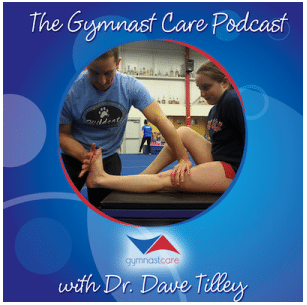Should Gymnasts with Back Pain Wear A Brace?
Today on the podcast, I’m very excited to bring to you something a little different.
Presentation from one of my recent students, Alea Penner, a former gymnast who has just graduated from Duke Physical Therapy School, and also coaches gymnastics.
She did a phenomenal, inservice lecture on bracing gymnasts with back-related injuries.
“Discussing bracing treatment for spondylolysis and spondylolisthesis in athletes. Summarizing the current available research that supports or contradicts current treatment standards and discuss topics of future research that are demanded by lack of current literature.”
The use of braces is controversial, so it’s really important for us to understand the current research on bracing.
If you are on the East Coast of the United States of America, there’s a pretty heavy dependency on when someone has a stress fracture or a spondee fracture to use a brace, but there are mixed reviews about not using braces on the West Coast.
Essentially, this is an overwhelming and complicated area that’s constantly evolving, and Alea wonderfully took on the enormous task of reviewing the literature and doing an inservice on bracing versus not bracing.
It’s very informative and a really important topic so I wanted to share it and put it out as a podcast.
I hope you enjoy and can learn something from this episode with Alea.
She discusses:
Does bracing limit gross motion and/or spinal segmental motion during ADL’s (activities of daily living) or sport-specific activity?
Does bracing lead to decreased strength and/or changes in posture/gait with prolonged use?
Does limited motion prevent the progression of a fracture or slippage?
Does bracing improved bone union? And is bony union predictive of a better return to sports outcomes and subjective pain?
What are spondylolysis and spondylolisthesis and how do they affect gymnasts?
The condition spondylolysis is due to a fracture or defect in the pars interarticularis, a segment of bone that joins the facet joints in the spine and a recognized weak point in the vertebrae during skeletally immature years.
Spondylolysis can further be described as isthmic spondylolysis which is a lesion in the pars interarticularis typically occurring in young athletes due to microtrauma from repetitive extension, rotation, and axial loading forces.
Facet joints in the spine function to keep the vertebrae in alignment with each other and often bear a large amount of weight and stress during gymnastics. Gymnastics skills such as back handsprings, yurchenkos, twisting, front tumbling, walkovers, tkachevs, pak saltos, jaegers, etc., require a significant amount of extension range of motion in combination with high impact loading and rotational forces that with excessive repetition may cause microtrauma to the pars interarticularis.
Since the pars interarticularis joins the facet joints, a lesion or defect in the pars interarticularis may lead to instability in the spine and back pain at the affected vertebrae with extension and rotation movements.
Spondylolisthesis typically develops as a progression of spondylolysis resulting in the anterior slippage of the affected vertebrae causing compression of the spinal nerve roots leading to back pain and nerve-related symptoms.
Spondy Bracing Research Gap Inservice
– Dave
Dr. Dave Tilley DPT, SCS, CSCS
CEO/Founder of SHIFT Movement Science












